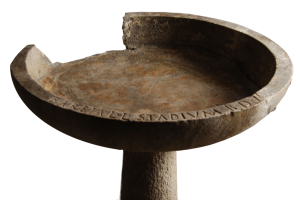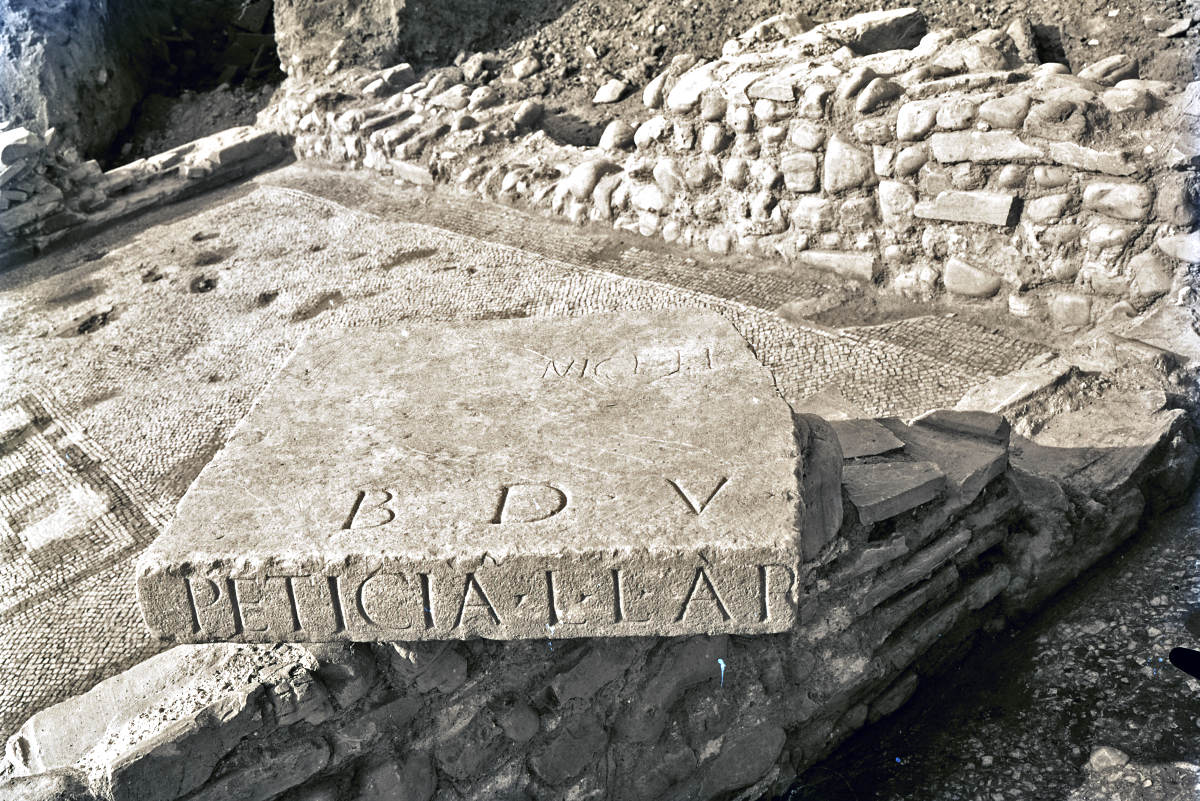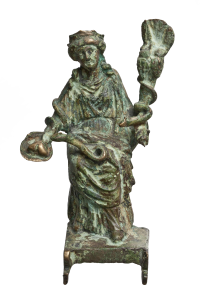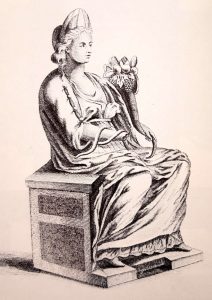Più che il nome di una divinità vera e propria (il nome non poteva essere pronunciato) questo era l’epiteto con cui indicare una delle divinità femminili più importanti, potenti e misteriose del pantheon romano, particolarmente venerata a Roma ma anche nel territorio di Aquileia, da cui provengono numerosissime attestazioni. Le testimonianze nel nostro territorio sono seconde come quantità solo a quelle del Lazio. Il culto si era affermato a Roma alla metà del I sec. a.C. e si era diffuso in breve anche in Italia centrale; era giunto poi ad Aquileia, in Istria e in Dalmazia nella prima età imperiale. Il culto si connotava inoltre come un culto misterico, solo per iniziate, e di esso non potevano essere diffusi i caratteri.
The name itself, as Cicero states "must never be known to men."

I caratteri del culto della dea e i riti a lei connessi prendono origine dal mito così come riportato da vari autori antichi, secondo cui Bona Dea era l’appellativo con cui nel Lazio antico era chiamata la dea Fauna, moglie o figlia di Fauno, divinità entrambe legate al mondo agreste, alla pastorizia, alla fertilità in generale. Nel corso dei secoli la dea prese altre diverse connotazioni, e a questi aspetti originari si aggiunsero quelli di altre divinità dalle caratteristiche simili: Bona Dea assunse così anche negli aspetti iconografici come la patera, il corno dell’abbondanza e il serpente, gli elementi peculiari delle divinità a carattere salutifero come Salus or Igea, to which young women about to embark on married life in particular turned.
According to the version of the myth told by Plutarch (c. 50-120 A.D.), the goddess Fauna was caught by her husband Faunus secretly drinking wine and for this she was beaten to death with myrtle branches. Another version of the myth, that of Macrobius (c. 385-430 CE), tells instead of Fauna, daughter of Faunus, so demure and chaste that she had never known a man and never wanted to be seen by men, who tried in vain to resist the advances Of her father who was in love with her. Faunus, after beating her with a myrtle branch and getting her drunk, turned into a snake and raped her. All these elements return in the aspects of ritual associated with the celebration of the cult of the goddess during the festivals dedicated to her.

Ancient sources, which are incomplete and not always reliable, speak of the diverse ways in which worship was celebrated in Rome. One festival was public and held annually on May 1, on the occasion of the dedication of a temple to the goddess on the slopes of the Aventine. The ritual was held in the open air; women were housed in tents, covered with vine branches, erected near the temple. Inside the temple was almost certainly a statue of the goddess beside which harmless snakes were raised. According to some authors, animal sacrifices were performed, particularly that of a pregnant sow or perhaps even a white heifer.
A private rite, on the other hand, was held in the residences of the most important magistrates (consuls and praetors), where the officiants were the wives or mothers of these personages, and was held in the first days of December. As in Rome, certainly in other urban centers and rural settlements similar celebrations were held. Men were absolutely banned from homes during the ritual: they were not to witness any ritual acts or see any sacred objects.

Private celebrations at home were attended by the matrons of the most important families in the city or territory; in Rome vestals were also present, and the ritual aimed exclusively at women took place at night. Rooms used as temples were adorned with vine shoots. There were braziers in which offerings and incense were burned, wine was liberated, which could not be named and was therefore called "milk." Similarly, vessels for "wine" were called "honey pots." Wine was not only used for ritual offerings but was probably also consumed by the participants. These name substitutions as well as the absolute prohibition of introducing myrtle branches into the ritual settings recalled the mythical origin of the cult of the Bona Dea. The celebration was accompanied by music, games and dances.
Within the many versions of the myth, however, certain elements are recurrent: the excessive intake of wine and the punishment by a man with myrtle branches. This explains why the rite included the exclusion of myrtle from the rooms where the cult was officiated, and the presence of wine under a false name. In addition, the emphasis on the chastity of the goddess explains the absolute exclusion of men from the ceremonies.
Feasts in honor of Bona Dea could be attended by both free women and enfranchised slaves (libertae).

For further study:
BAKKERJ.Th, Living and Working with the Gods. Studies of Evidence for Private Religion and its Material Environment in the City of Ostia (100-500 AD), Amsterdam 1994.
BROUWERH., Bona Dea. The Sources and a Description of the Cult, Leiden 1989.
FONTANA F., Luoghi di culto nel centro romano di Tergeste, in «Aquileia Nostra» 72, 2001, cc. 89-124.
MASTROCINQUE A., Religione e politica: il caso di Bona Dea, in Politiche religiose nel mondo antico e tardoantico. Poteri e indirizzi, forme di controllo, idee e prassi di tolleranza, Atti del convegno (Firenze, 24-26 settembre 2009), in «Munera» 33, 2011, pp. 165-172.
MASTROCINQUE A., Bona Dea and the Cults of Roman Women, Stuttgart2014.
MERCATTILI F., Bona Dea, ή Θεόςγυναικεϊα, in «Archeologia Classica» 61, 2010, pp. 7-40.
